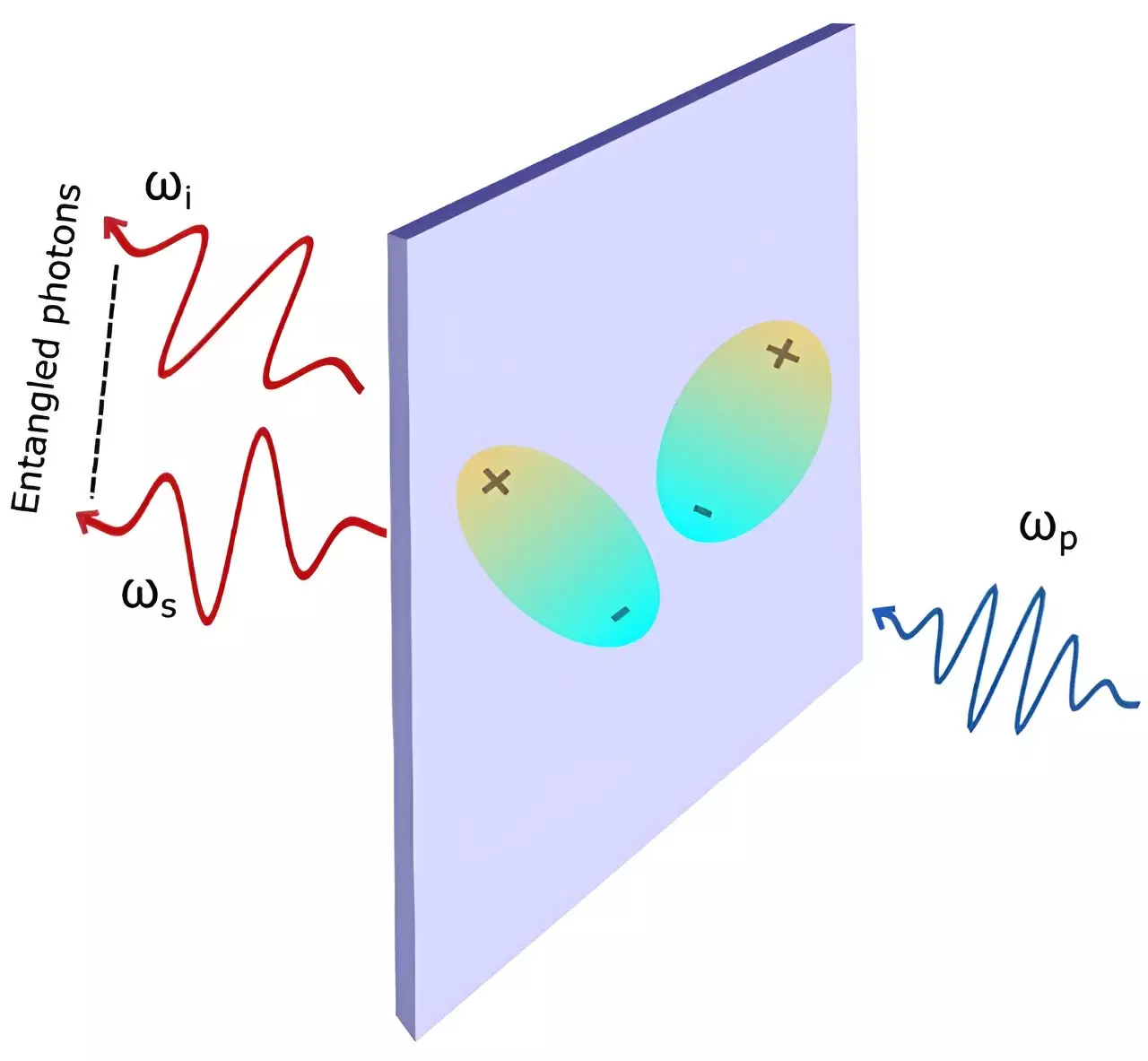In a groundbreaking study conducted by scientists from the National University of Singapore (NUS), the significance of excitonic resonances and transitions between excitons in boosting the efficiency of generating entangled photon pairs has been revealed. This discovery holds enormous potential for the development of highly efficient ultrathin quantum light sources, revolutionizing the field of quantum technologies.
Quantum entanglement lies at the heart of many quantum technologies, and it refers to the phenomenon where the properties of two quantum particles are interconnected, irrespective of the distance between them. Entangled photons, which are weightless particles of light, are typically generated by directing light onto specific non-linear optical crystals through a process known as spontaneous parametric down-conversion (SPDC). However, the efficiency of this process has long been a hindrance to its widespread application.
Associate Professor Su Ying Quek and her research team from the Department of Physics at NUS demonstrated that the efficiency of SPDC can be significantly improved by leveraging many-body excitonic interactions within non-linear optical crystals. Excitonic interactions involve the interaction between negative and positive charges created when light interacts with the crystal, known as excitons. These pairs of opposite charges, stemming from the crystal’s fundamental excitations, play a crucial role in enhancing the efficiency of SPDC.
The team’s findings, published in Physical Review Letters, highlighted the impact of the proximity of these charges on SPDC efficiency, particularly in relation to the energy or frequency of the light. By employing fully quantum mechanical calculations to analyze the non-linear optical response of crystals and factor in excitonic effects, the researchers were able to demonstrate a substantial improvement in efficiency compared to traditional methods that overlook the interaction between negative and positive charges.
One of the key advantages identified by the research team is the use of ultrathin crystals, which can overcome the phase matching problem associated with SPDC. While conventional wisdom suggested that the efficiency of ultrathin crystals in SPDC would decrease with material volume, the team’s research indicated that the enhanced excitonic interactions in these crystals could counteract this effect. This breakthrough makes ultrathin crystals a promising source for generating entangled photons.
The team applied their theoretical approach to NbOI2, a layered non-linear optical material, to study both SPDC and second harmonic generation (SHG). By simulating SHG intensities based on the polarization angle of incident light, they were able to validate their findings against previously conducted experimental work. Furthermore, the researchers observed that excitonic enhancement is particularly pronounced when the frequency of the “pump” beam aligns closely with an excitation frequency within the crystal.
The discoveries made by Professor Quek and her team open up new possibilities for generating entangled photons using ultrathin materials, which offer greater flexibility for integration into hybrid quantum-photonic platforms for next-generation devices. This breakthrough represents a significant advancement in the field of quantum technologies and paves the way for the development of highly efficient quantum light sources with diverse applications.


Leave a Reply